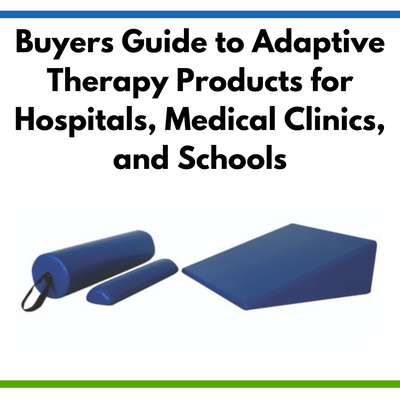 21st Oct 2025
21st Oct 2025
Buyers Guide to Adaptive Therapy Products for Hospitals, Medical Clinics, and Schools
Comprehensive buyers guide to adaptive therapy products for hospitals, clinics and schools – explore seating systems, sensory swings, wedges, gait devices and more with expert tips and research‑backed insights.
Why adaptive therapy matters?
The Individuals with Disabilities Education Act (IDEA) requires children with disabilities to receive a free and appropriate public education. In the 2021‑22 school year, roughly 7.3 million U.S. students were served under IDEA, up from 6.4 million in 2010‑11. Schools and healthcare facilities must therefore provide environments that promote independence, participation and safety. Adaptive therapy products—including seating systems, sensory swings, wedges and gait devices—enable individuals with disabilities to perform daily activities and therapy exercises safely. Whether you run a hospital, operate a medical clinic or manage special education in a high school, choosing the right adaptive equipment protects patients, reduces caregiver injury, and fosters inclusion.
ProHealthcareProducts.com contains many products specifically designed for adaptive therapy. This guide focuses on the best products to most effectively help those children in your care.
What is adaptive therapy equipment?
Adaptive therapy products are devices that support individuals with disabilities while they participate in everyday tasks or therapeutic activities. These items include supports, positioning seats, pillows, wedges and other items designed to help people “perform a function such as eating or exercising.” Because the needs of hospitals, outpatient clinics and schools differ, the following sections categorise equipment by function and explain the features that matter in each setting.
Adaptive Seating Systems and Modular Feeders
Children and adults with physical or neurological impairments often struggle to maintain a stable sitting posture. Proper seating enhances head and trunk stability, promotes the development of motor skills, and allows the arms and hands to move freely for self‑feeding and play. Adaptive seating also improves visual scanning and tracking and reduces the amount of caregiver assistance needed. For hospitals and clinics, seating systems provide safe postural support during therapies; in schools they enable students to interact with peers at a common height and join class activities.
One example of this includes the Skillbuilders Modular Seating Systems. Skillbuilders manufactures modular seating systems designed for pediatric and adult users. The seats provide safety and support to help individuals experience social interaction and inclusion. Key features include a built‑in pommel/leg abductor and contoured interior, safety harnesses, and molded foam construction with a waterproof coating. Configurations include feeder seats, floor sitters, mobile floor sitters and accessories.
The accessories complement seating systems and enhance comfort. Skillbuilders notes that its accessory products “provide safe, functional and supportive accommodation” for individuals with special needs and their caregivers. Accessories include adjustable trays, supportive headrests, and wrap‑around collars, all of which improve interaction and reduce caregiver strain.
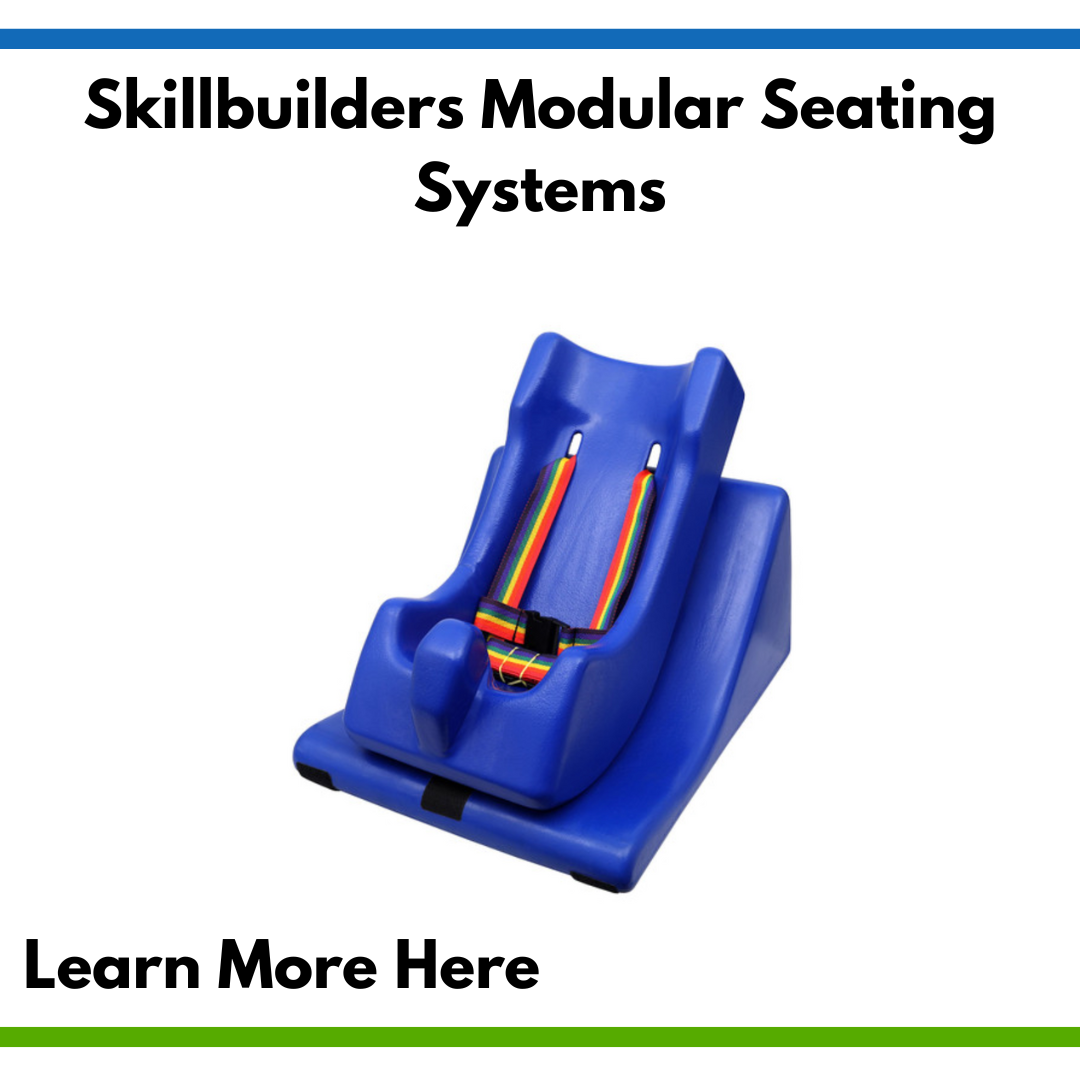 |
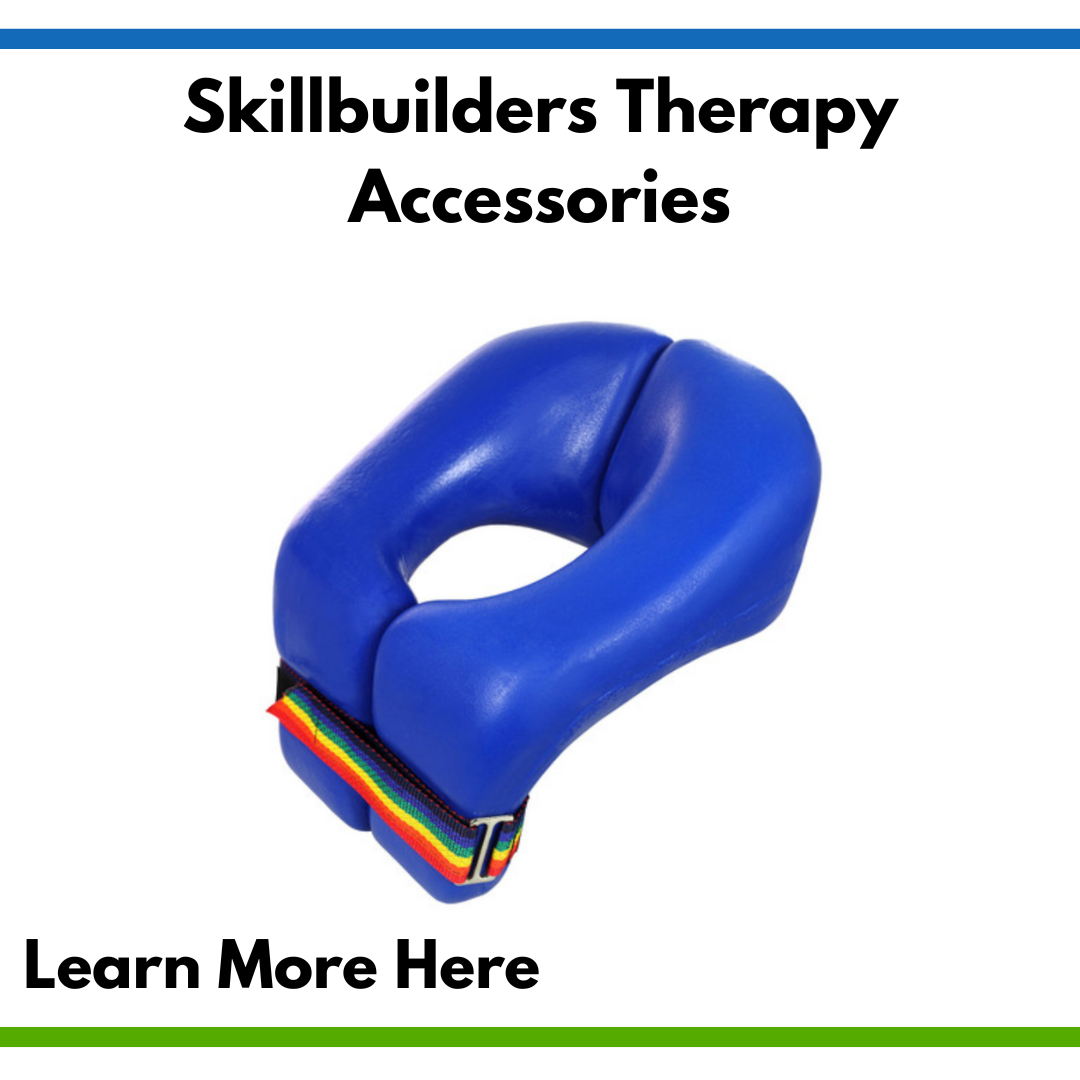 |
Sensory Swings and Vestibular Equipment
Swinging provides powerful vestibular stimulation. Occupational therapy resources note that rhythmic swinging improves body awareness, muscle tone, balance, coordination and alertness. Gentle linear motions are calming, while fast rotary movements excite the vestibular system; both can be used therapeutically by trained staff. For children with sensory processing disorders, swings offer deep pressure and proprioceptive input to help with regulation.
Skillbuilders full‑support swing seats incorporate a built‑in pommel, high back, and harness. Head and leg rest options are available for users who require additional support, and the seats can be hung using chains or ropes. In hospitals, they are used for sensory integration therapy; in schools they promote inclusion on playgrounds and in sensory rooms.
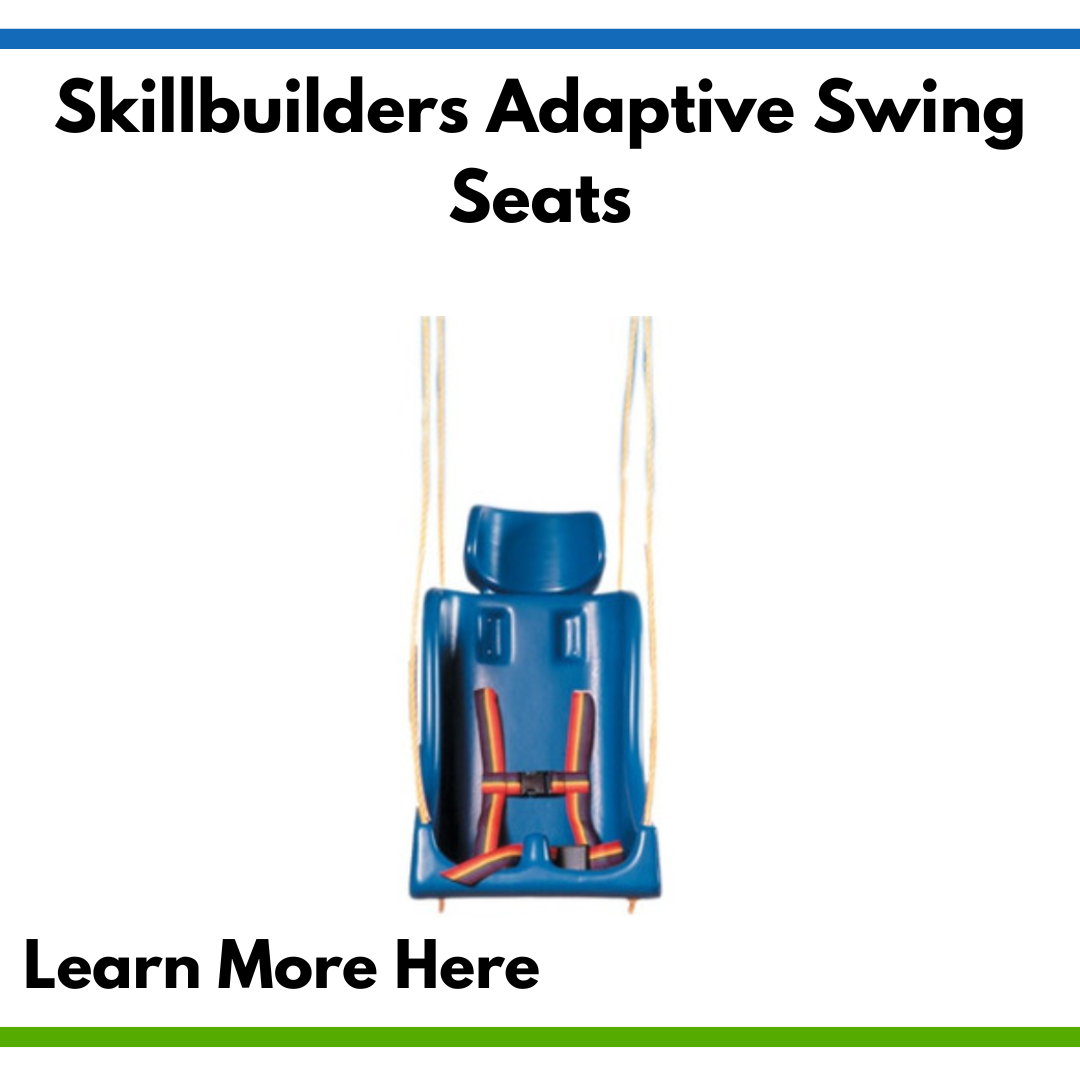 |
Wedges, Rolls, and Positioning Aids
Positioning wedges provide back and side support, alleviate pressure, and prevent slipping for patients in bed. In pediatric therapy, they promote prone positioning to encourage cervical extension and develop head control. Rolls and wedges also reduce caregiver strain by enabling safe repositioning.
Skillbuilders offer a variety of vestibular wedges and rolls. These products help facilitate exercise by giving users leverage for body movements and making certain positions more comfortable. They can customize the seating angle of modular seats for more ergonomic feeding and inclusion, and are versatile enough for special education and physical education programs.
Beyond Skillbuilders’ products, therapists use trochanter rolls, hand rolls, splints, and slide sheets. Slide sheets reduce friction and effort during patient repositioning and decrease musculoskeletal injury risk for healthcare workers. Proper seating for children requires feet flat on the floor, ankles and knees at 90°, hips at 90°, and arms resting comfortably.
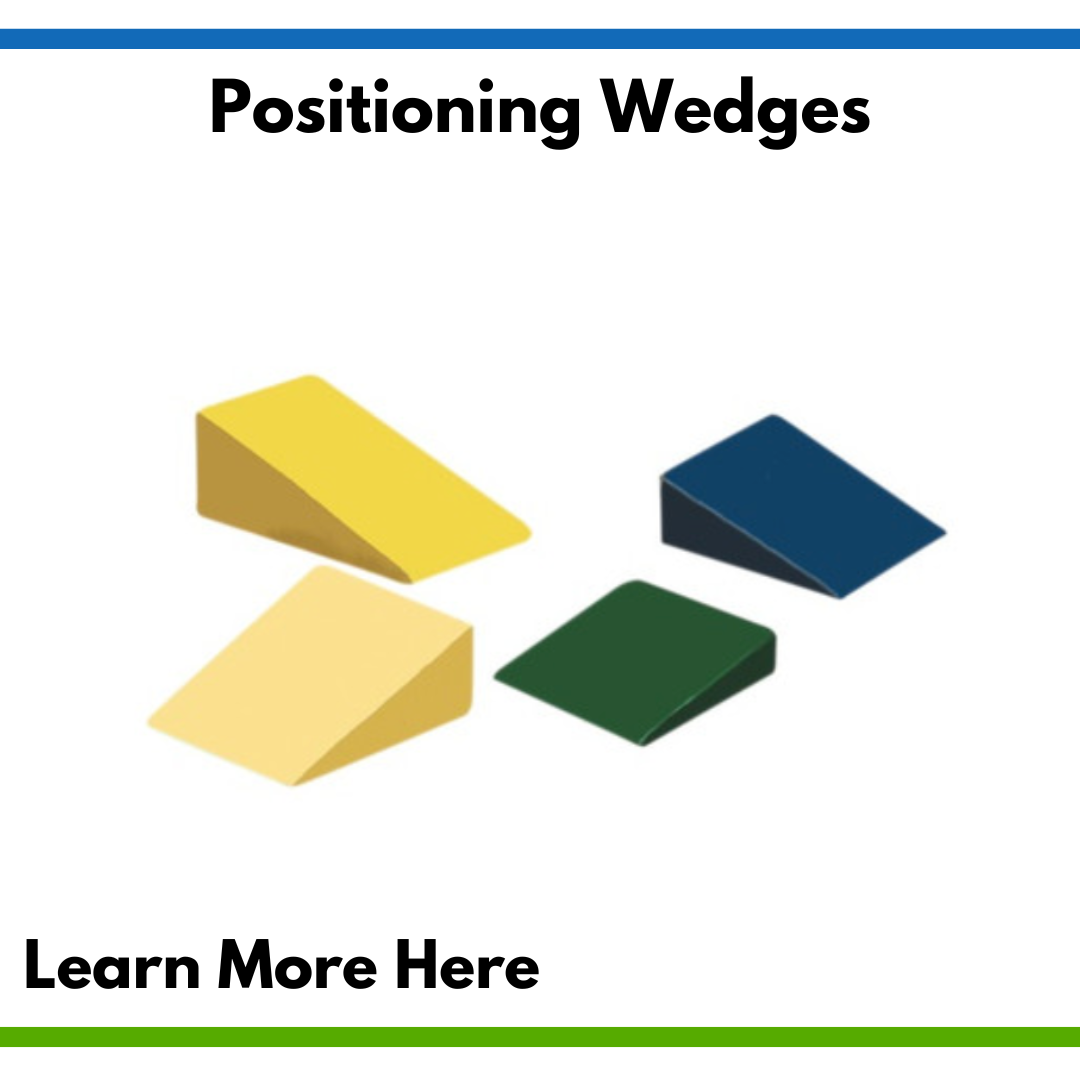 |
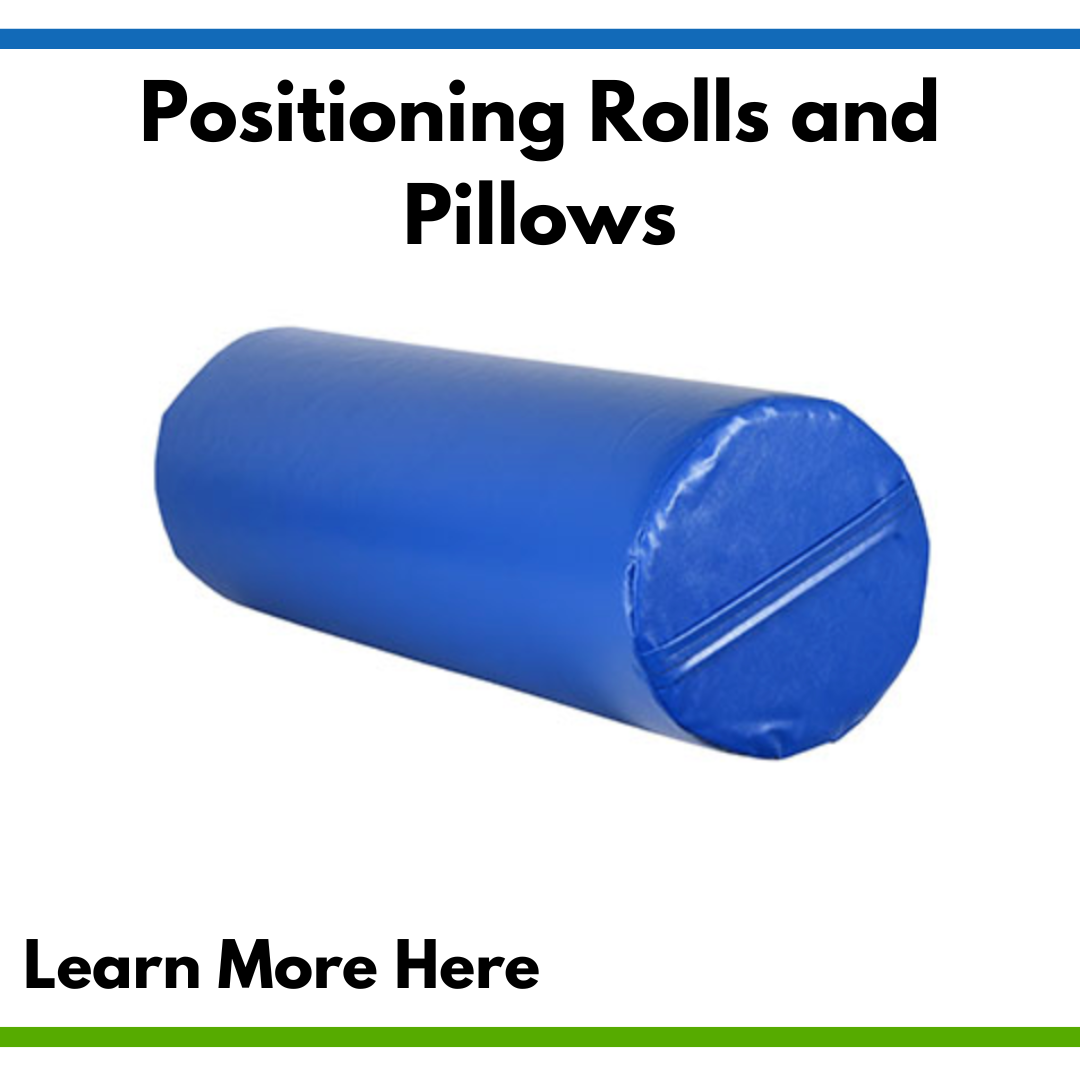 |
Gait Assist Devices and Mobility Aids
Gait belts provide support during transfers and walking and are used by therapists and caregivers. They are not for lifting but for guiding movement and preventing falls. These belts come in many lengths and help protect caregivers from back injuries.
Canes support individuals with lower extremity strength deficits, minor balance issues or pain. Proper fit aligns the handle with the wrist and allows slight elbow flexion. Patients should use the cane opposite the weaker leg and move it with the injured side, then step forward with the stronger leg; on stairs remember, “good up, bad down”.
Standard walkers offer substantial weight‑bearing support and must be lifted with each step; two‑wheeled walkers permit a more natural gait without lifting; knee walkers provide a crutch alternative with comfort and maneuverability. Remember the stability vs mobility trade‑off..
Rollators are four‑wheeled devices that provide balance and stability, and include a seat for resting and usually a basket. These products do require sufficient core and upper‑body control.
Unweighting systems provide partial body‑weight support for walking, posture, and balance training. The PhysioGait system enables gait training, sit‑to‑stand, and fall‑prevention drills with confidence.
When comparing different gait devices, you want to consider the weight support vs mobility. The following chart visualises the trade‑off between support and mobility across common devices.
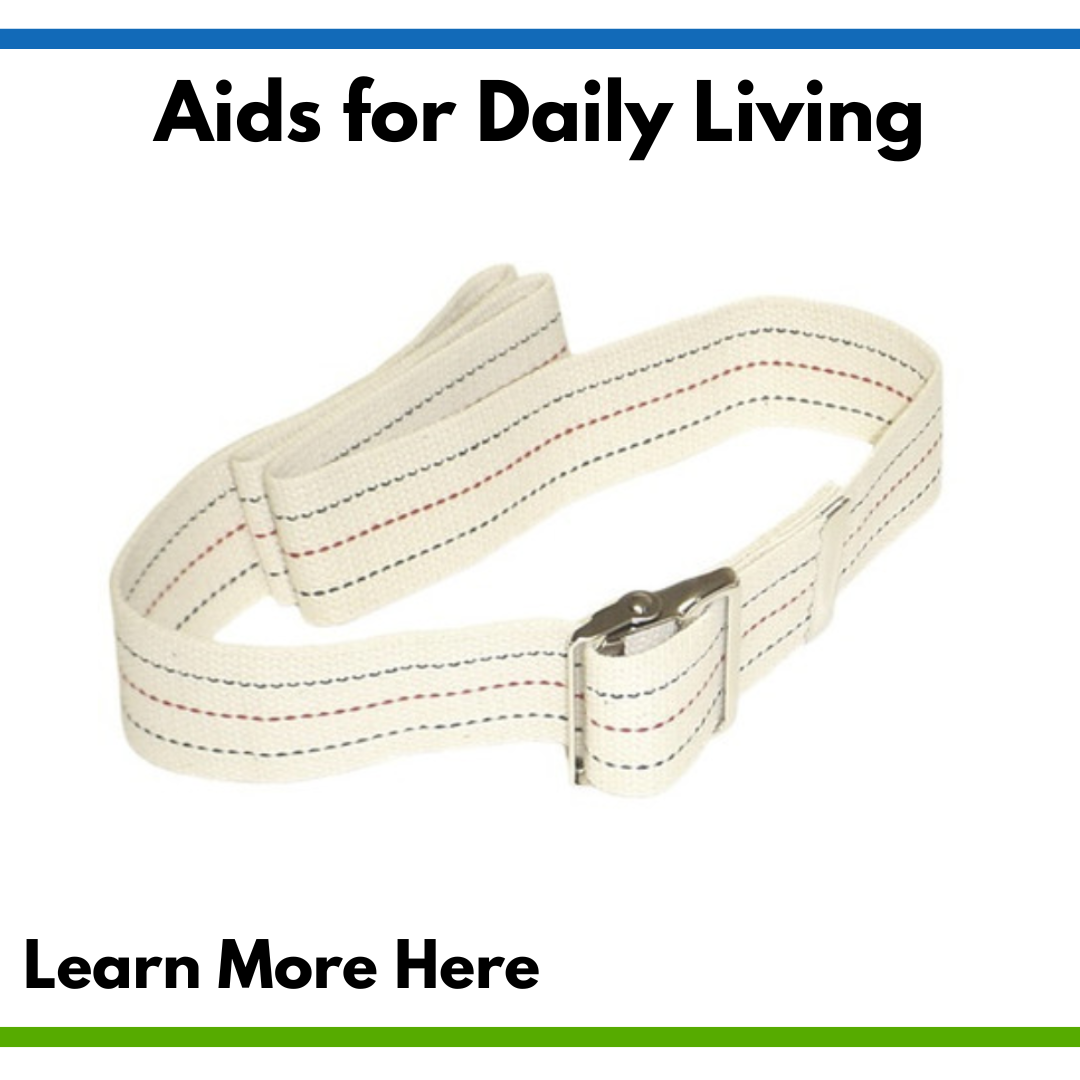 |
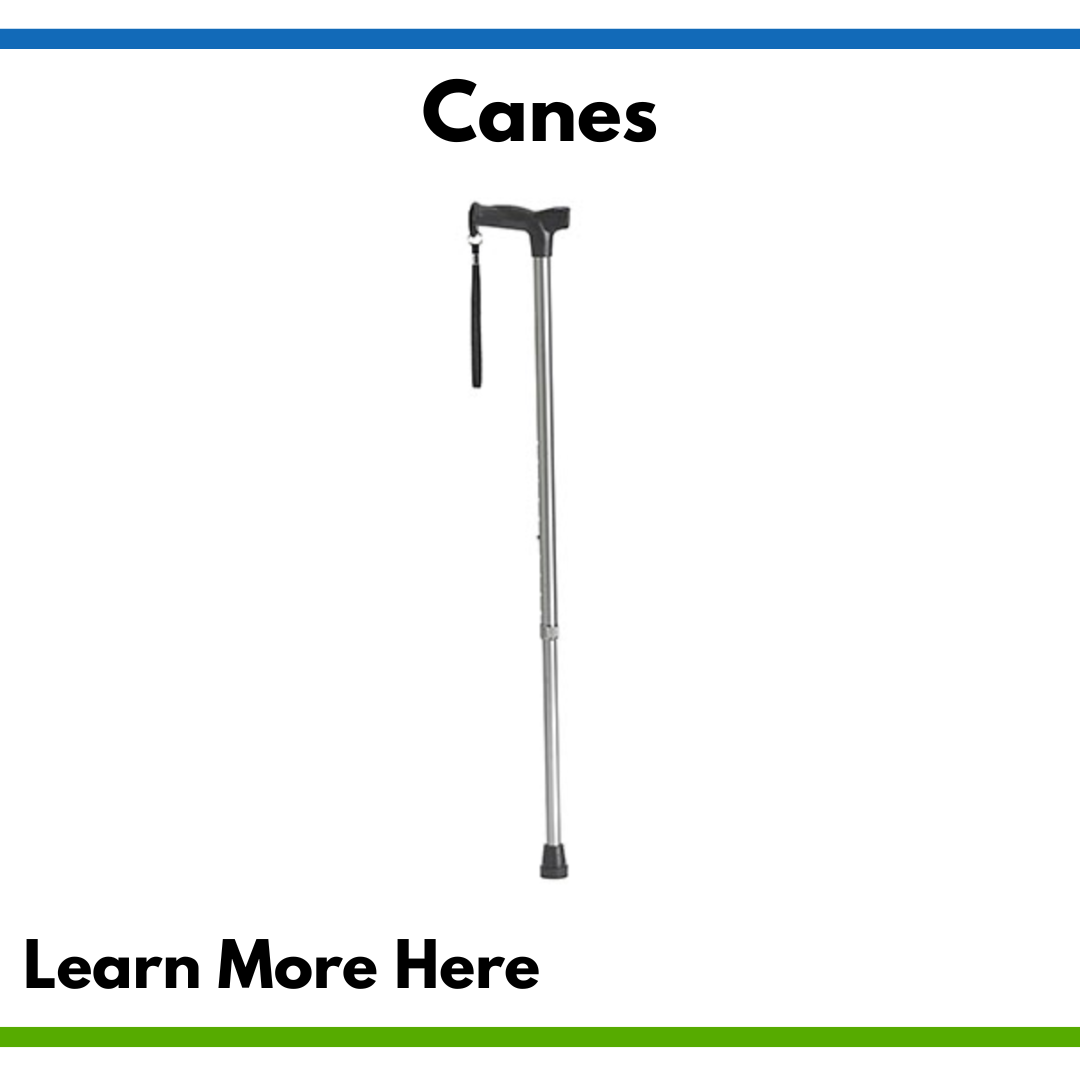 |
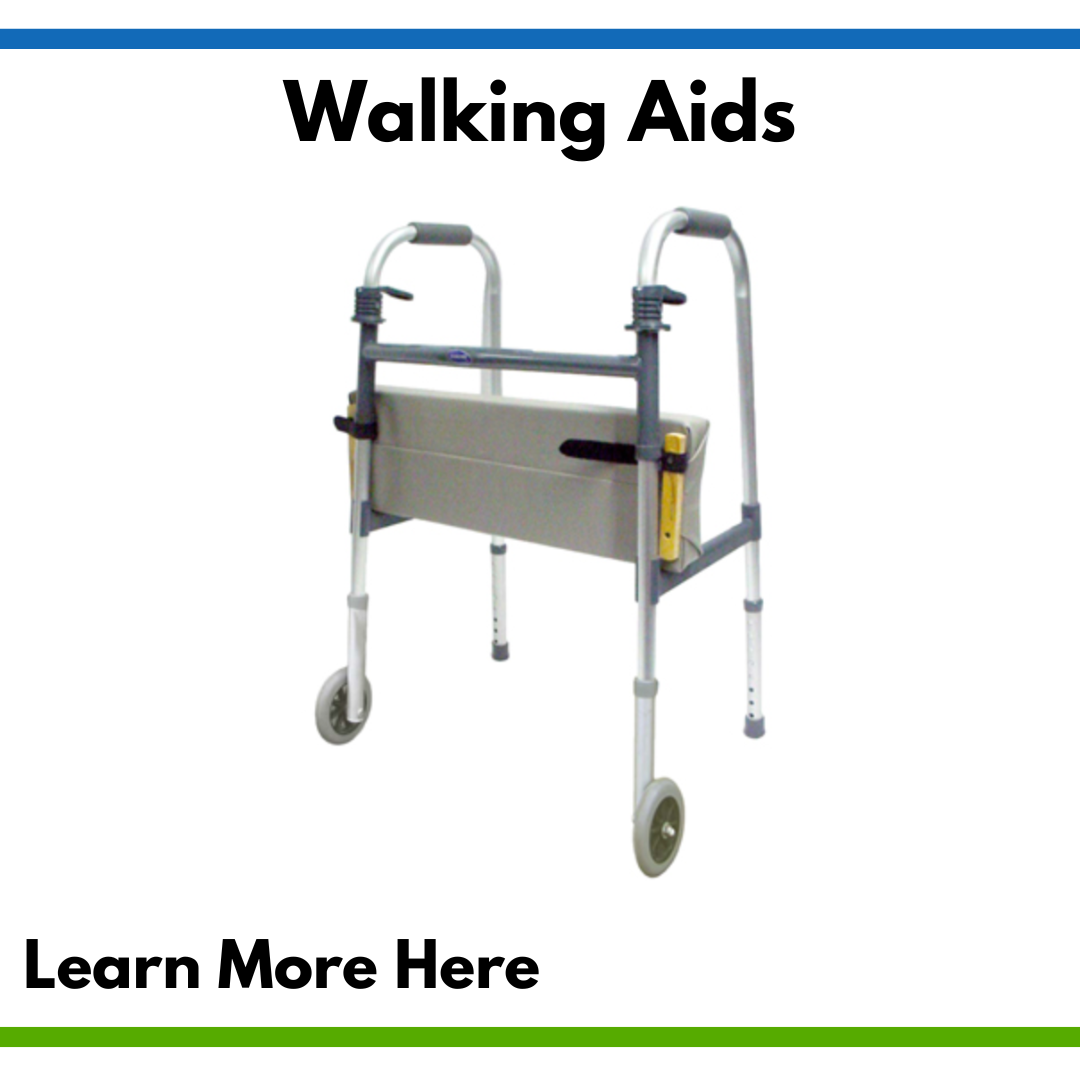 |
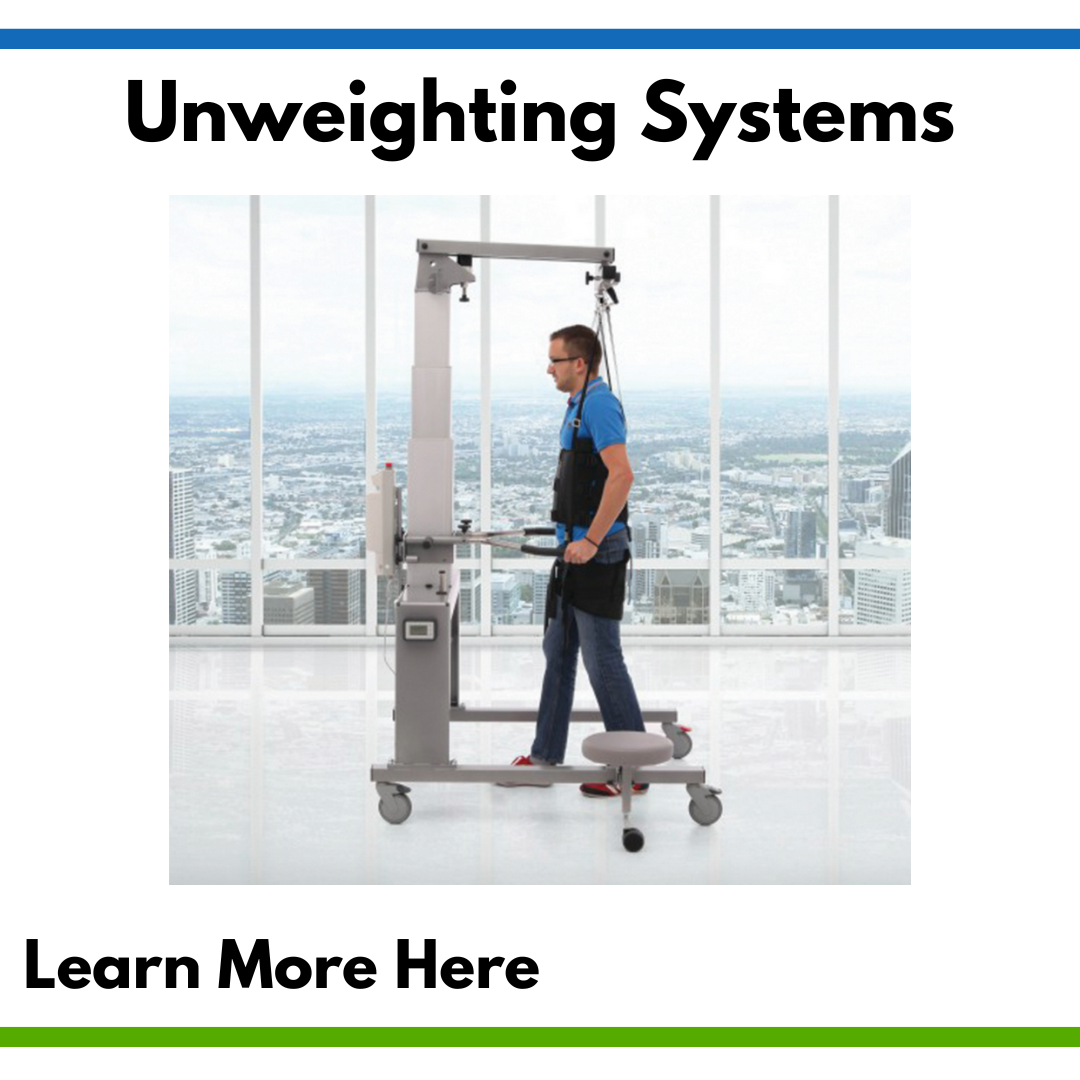 |
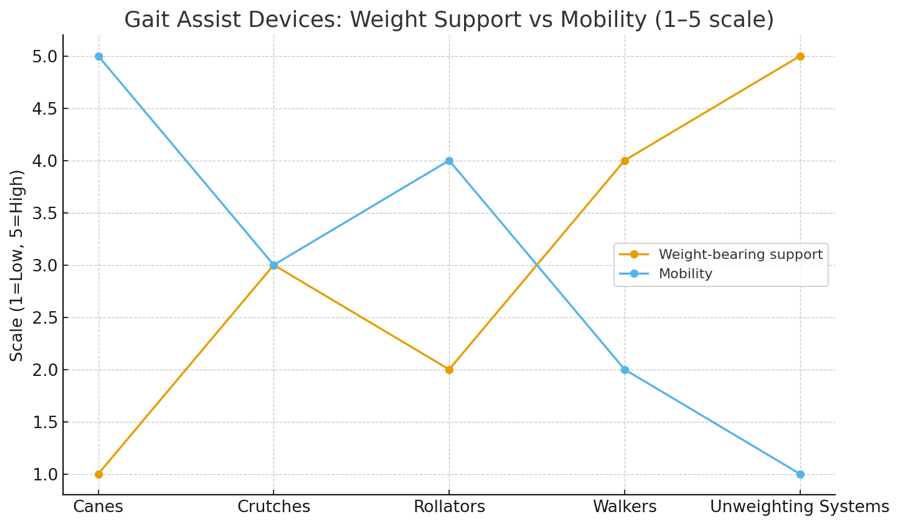
Gait Trainers and Scooters
For children who cannot ambulate independently, pediatric gait trainers provide body‑weight support and postural correction. The NAPA Center explains that gait trainers feature supportive frames, adjustable components, and a wheeled base, improving independence, posture, muscle strengthening and coordination. Portable gait trainers enable mobility across home, school, and clinic settings.
ProHealthcareProducts.com explains that pediatric scooters help develop strength and proprioceptive feedback while making therapy fun and engaging.
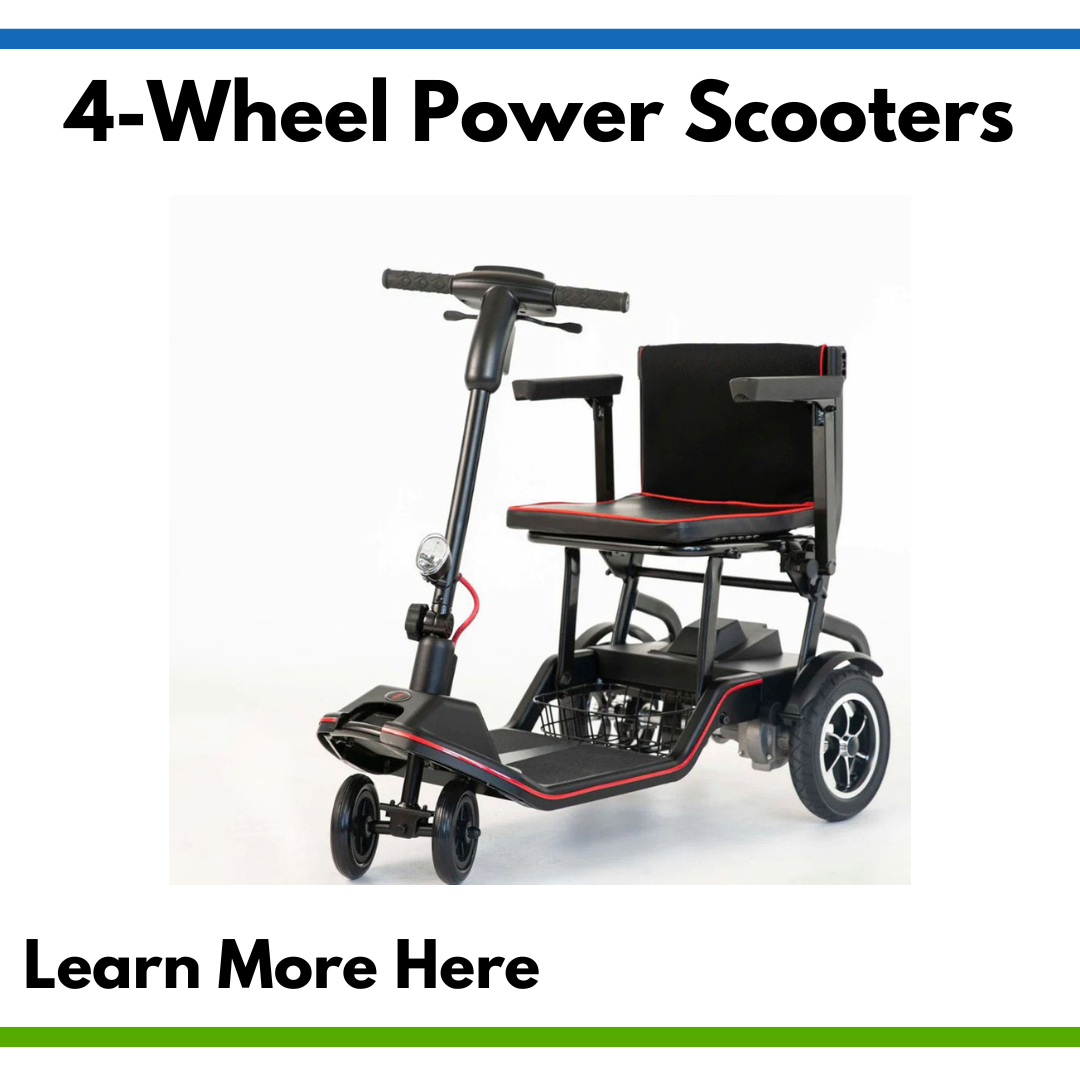 |
Choosing Pillows and Cushions
Using the proper pillow can help maintain spinal alignment, alleviate pressure, and prevent pain. Evidence indicates orthopedic pillows provide strong support for spinal alignment compared with other types. In hospitals and clinics, opt for designs that keep the spine neutral; in classrooms, therapeutic seat cushions or wedges promote posture and reduce fatigue.
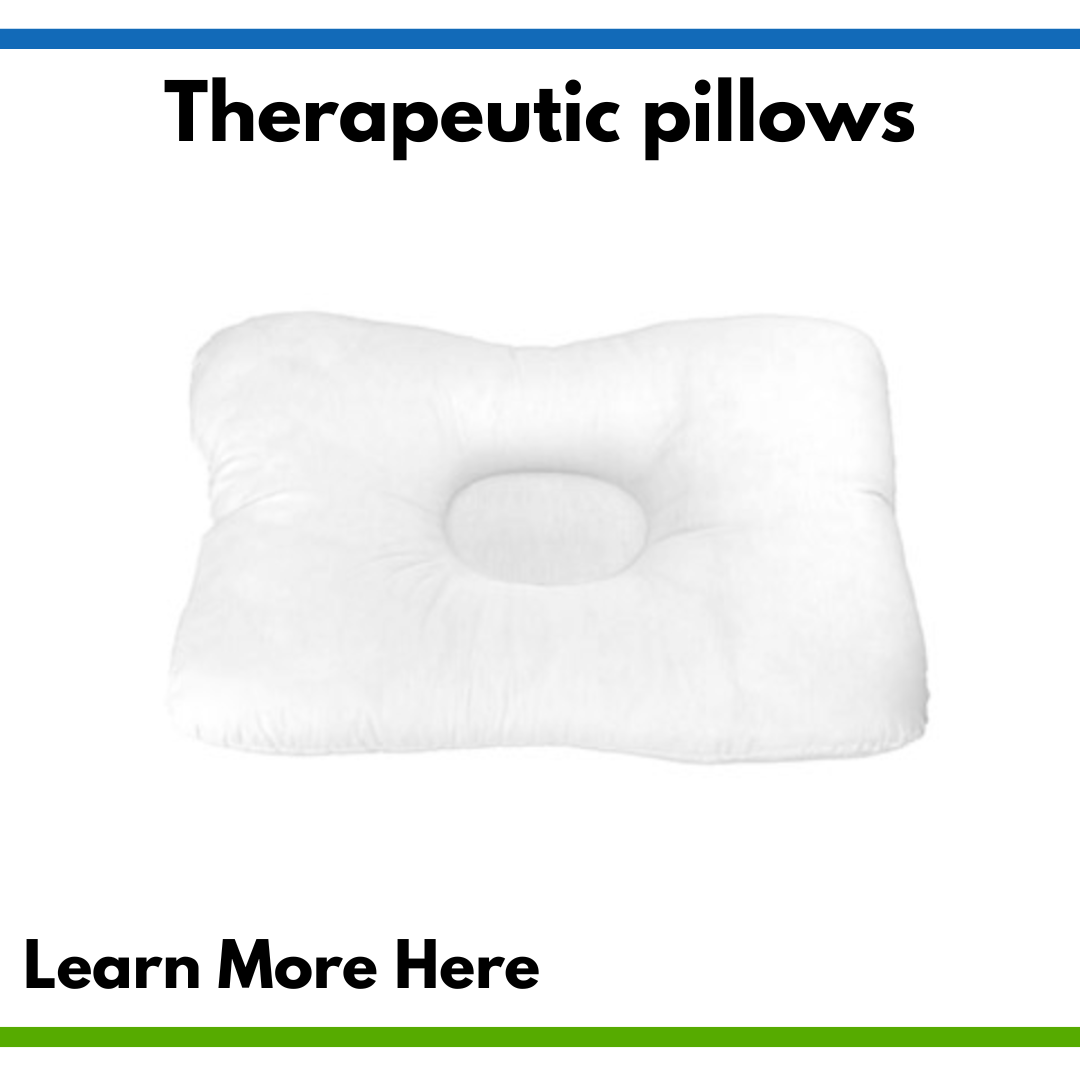 |
Balance and Stretching Equipment
Balance training is essential for preventing falls, improving posture, and enhancing proprioceptive sensitivity in muscles. Physiopedia emphasises that multi‑component balance training improves standing balance, locomotor performance, and quality of life. In schools, balance boards and foam pads can be integrated into PE classes to build coordination and proprioception; stretching aids help maintain flexibility and reduce injury risk.
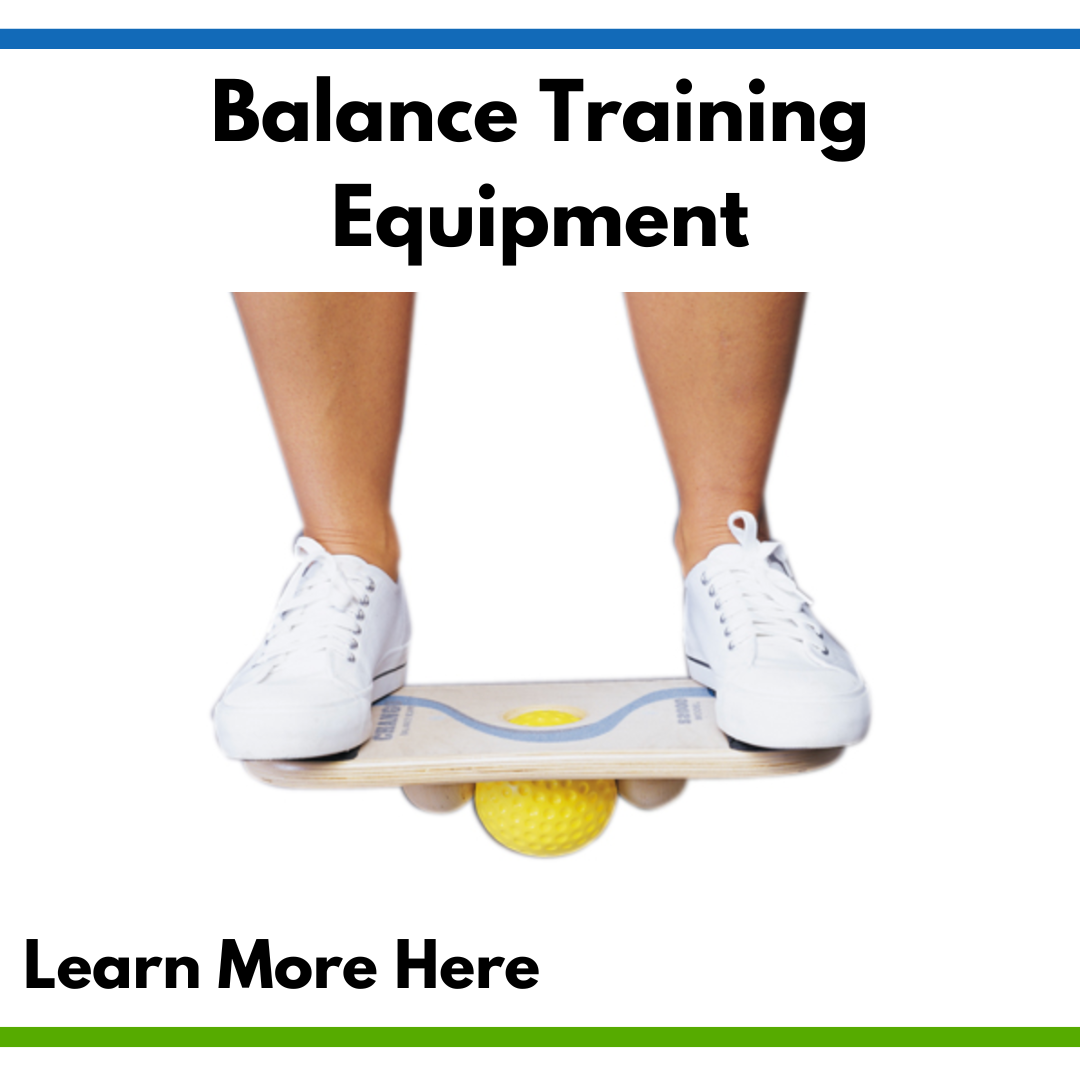 |
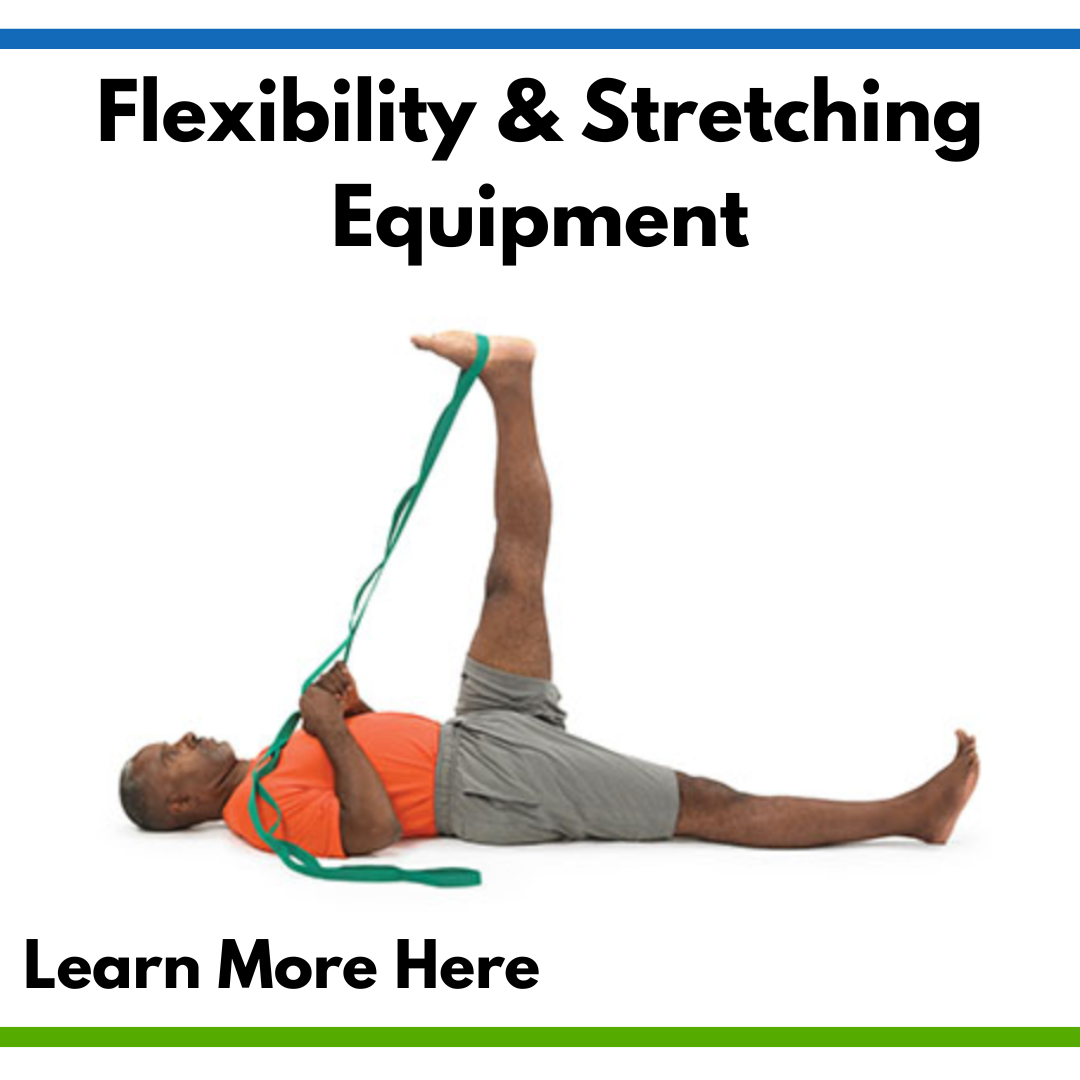 |
Comparing Skillbuilders Product Categories
The chart below illustrates (approximately) the distribution of products within the Skillbuilders adaptive therapy line to visualise category breadth.
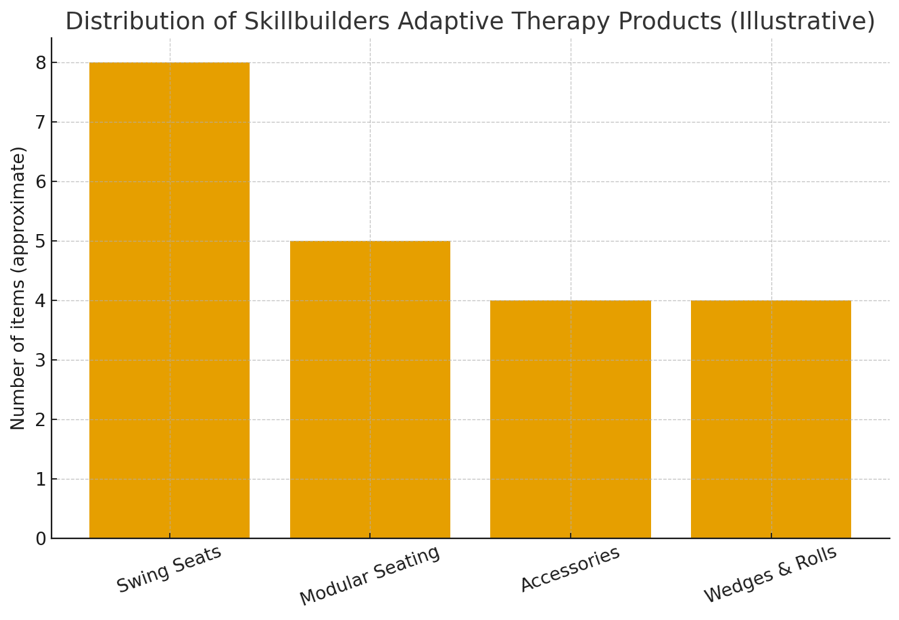
Rising Numbers of Students with Disabilities
Public K‑12 schools served 7.3 million students with disabilities in the 2021‑22 school year (about 15% of enrollment), up from 6.4 million in 2010‑11. This growth reinforces why investing in adaptive therapy products is essential for compliance and inclusion. See the chart below.
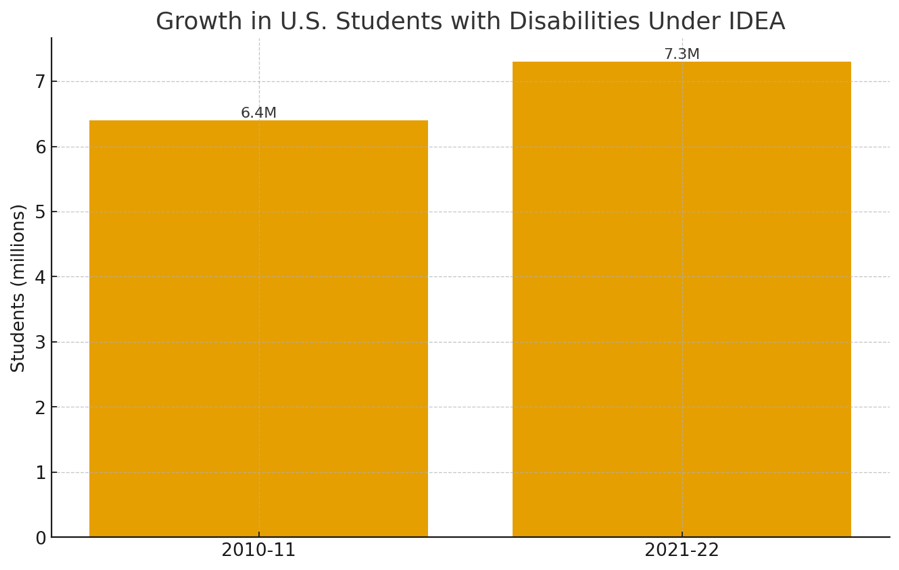
Purchasing Considerations for Hospitals, Clinics, and Schools
When deciding what items to add to your facility, consider asking the following questions to help you know what items to take into consideration:
1) Who is the main user of the item? What is their height, weight, diagnosis, postural control and mobility level drive product selection and the need for adjustability?
2) Where is the item going to be used primarily? A hospital setting would prioritize durability and cleanability. Clinics often need portability. Schools must cover a wide size range.
3) What safety measures need to be in place? Seek sturdy construction, non‑slip surfaces, and secure harnesses. Ensure braking/wheel systems match the environment when they will be used most of the time.
4) What are the therapeutic goals for the client? Positioning (wedges/rolls), sensory integration (swings), mobility (gait trainers), strength (balance/stretching tools).
5) What training will be required for each item? Staff training on fitting and use reduces injury (see cane/crutch guidelines).
6) What are your funding options? Consider looking into grants and bundled purchasing. ProHealthcareProducts.com offers quotations for therapeutic products and discounts on a variety of products.
Conclusion and Next Steps
Adaptive therapy equipment empowers individuals with disabilities to participate safely in everyday activities and therapeutic exercises. Whether you operate a hospital, manage a therapy clinic, or coordinate special education services in schools, understanding the purpose and features of seating systems, swings, wedges, gait devices and other tools allows you to make informed purchasing decisions. Investing in high‑quality products and training staff in their proper use enhances outcomes, reduces caregiver injury and builds inclusive environments.
Contact us at Service@prohealthcareproducts.com— our team will help you find the right equipment for your needs or provide a customized quote.





